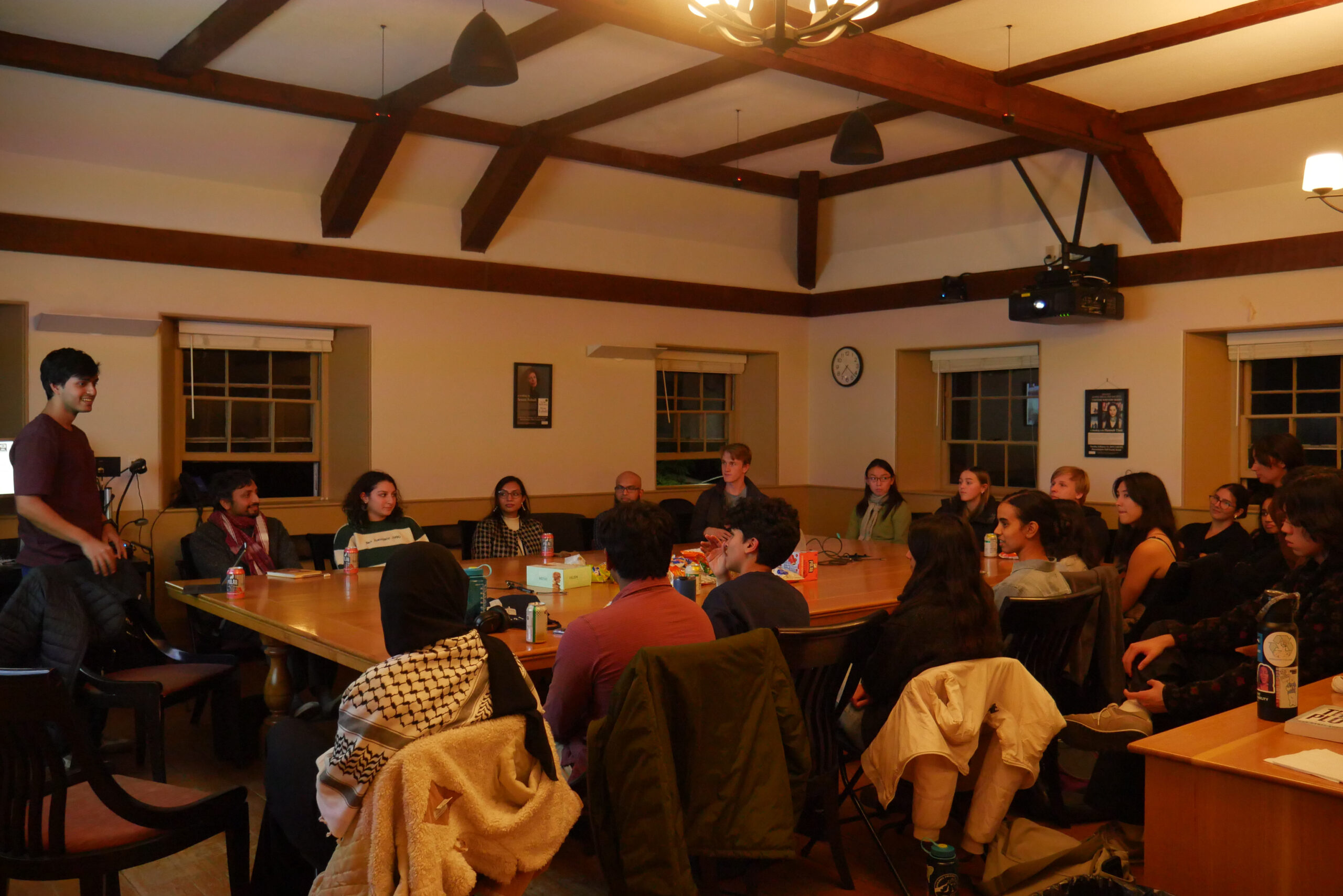SASA discussion illuminates the power of student protest in Bangladesh
November 1, 2024
 Isa Cruz
Isa CruzLast summer, Bangladeshi university students led a series of anti-government protests, which successfully ousted the country’s autocratic regime and sparked conversations around the globe about the power of student protest to drive political change. One of these conversations took place in Massachusetts Hall on Tuesday night, as students and faculty gathered to discuss the protests’ implications for Bangladeshis and beyond.
The free-form discussion hosted by the South Asian Students Association (SASA) was focused on not only educating attendees on the events of last summer but also on generating a larger discussion about the significance of student protests on a global scale. In this vein, Tuesday’s event marks the first in a series of SASA-hosted discussions on student protest entitled “The Azaadi Series.”
SASA Advisor and Assistant Professor of Anthropology Shreyas Sreenath explained the choice to name the series “Azaadi,” meaning freedom in Persian.
“Azaadi is a word that is very inconvenient in the regimes in power wherever it erupts, and I thought it might inspire us to be inconvenient to the ruling regimes of the day [and] also inspire us to think of what freedom means in its vernacular flavors,” Sreenath said.
The evening began with a presentation by SASA leader Zunain Husain ’25, which broadly summarized the socio-political forces that drove the protests in Bangladesh last summer. The protests, Husain explained, were originally stoked by the backlash against a government-installed quota system in the civil service. The system reserved 40 percent of civil service jobs for descendants of those who fought for Bangladeshi independence in 1971, leading students to call for a merit-based system.
“A lot of the people who were a part of the liberation war in 1971, which is essentially everyone who was in that land at the time,… [were] not able to get certain certification to prove that they were a freedom fighter or now are the children of freedom fighters. So there’s this room for certain corruption that exists,” Husain said.
Though the quota system is what initially drove students to protest, Tuesday’s discussion outlined the autocratic political landscape in Bangladesh which unleashed the movement’s momentum and ultimate success in ousting the former prime minister. Mohammad T. Irfan, associate professor of digital and computational studies and computer science and Bangladeshi citizen, emphasized the importance of expanding the narrative of the movement beyond the issues in civil service.
“In the beginning, you said that the quotas system is the reason [for the protests]. I would disagree.… The reason is the [government’s] suppression of speech. The quota system was basically the proverbial straw that broke the camel’s back,” Irfan said.
The conversation dug into the significance of protestors’ mass destruction of government property, including a brand new subway station boasted as a trademark accomplishment of the former regime. Irfan underscored the suppressive political landscape underlying the destruction of the station.
“People … didn’t have any kind of feelings towards this subway station because they knew: ‘This is not for me,”’ Irfan said. “All of the metro rails, the subway, the TV stations, these are built for people, but it was made clear that you don’t own it—it’s basically of the kings of the country who own it. So it’s an open autocracy.”
Echoing Irfan, Sreenath discussed the historical roots of property destruction as a protest tactic in South Asia.
“If you look at the structure of dissent, it is the same exact actions that occur over and over in South Asia and elsewhere.… It’s burning tax offices, burning graineries, destructing infrastructure—this is how the people who are voiceless express themselves over and over again,” Sreenath said.
The conversation then further explored the relationship between South Asia’s colonial legacy and the history of social movements in the region.
“[Dissent] ignites because the structure that we’re living under is shifting very slightly, but essentially, the framework was laid by the British in the case of South Asia. So the dissent keeps poking at that structure in the same way,” Sreenath said.
Throughout the evening, attendees unpacked the protests in the context of battles for political liberation beyond Bangladesh. Husain showed a picture of Bangladeshi protestors flying a Palestinian flag, discussing the broader scope of the goals of many protestors.
“During the movement, the idea of freedom as something that’s universal went around a lot. If you see a lot of the protest photos, the Palestinian flag was being flown quite a lot,… embodying ‘freedom here, freedom there, freedom everywhere,’” Husain said.
Yasemin Altug ’25 attended Tuesday’s discussion and was struck by the power of student voices in transforming Bangladesh’s political landscape.
“It was really eye-opening to see the contrast between here and how slow the student movements move or sometimes how little [of an] effect they can have, versus how it led to an independence of an entire country [from an autocratic regime],” Altug said.

Comments
Before submitting a comment, please review our comment policy. Some key points from the policy: